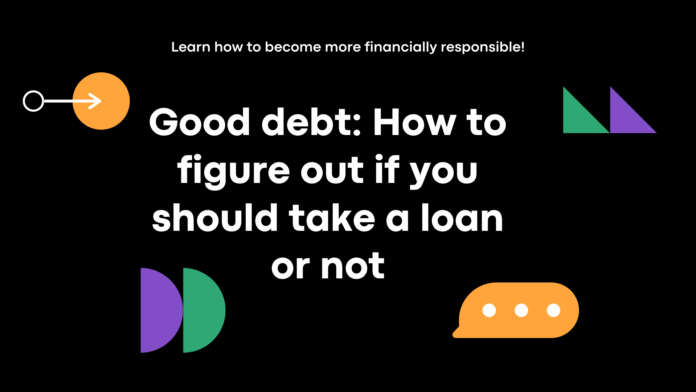Debt is divided into good debt and bad debt, and it’s worth knowing the difference for your financial health. Good debt is the money you owe for things that are helpful towards building wealth and income increments. These include students loans, mortgages, or business loans. While bad debt categorizes that debt that does not improve your finances. Bad debt is a credit card or consumer debts
Your ability to successfully use good debt for your benefits depends solely on a lot of factors. We’ll be tackling those factors in just a moment.
Student Loans
Although the lower-income bracket uses debt to finance their education, you ought to understand that not all degree programs are equal. If you are borrowing to fund your education, it is wise to borrow less or an equivalent to your first paying job. This means you should not borrow more than you will be earning in your first year on a new job just after college.
Bank Loans: Eligibility and requirements for small businesses
For instance, if you are applying for Electrical Engineering, and the starting salary is $68,000 yearly. You shouldn’t borrow more than $68,000 to fund this career path.
This will help you in the long run, when your salary is gradually increased. You can run the race of paying off your debt using the 10 years window without any form of stress.
Notwithstanding, if you will be graduating in a shaky economic time, you should consider taking lesser loan amounts. The tendency to anticipate the economic foresight is low for you, therefore, take even lesser loan amounts.
Mortgages
Historically, mortgage debt is considered good debt, and the safest form. The reason is that your monthly payments build equity for you. Albeit, the Great Depression has caused a downturn in this thinking. We have been made aware that prices do not rise indefinitely, so borrowing than you can afford to pay off pose a significant risk to your financial health.
Read Also: How to achieve your new year’s financial resolutions
Undoubtedly, mortgages are still the most accessible way to build a safe investment as a result of home equity. You need to have a proper understanding of the home market and how much you should borrow.
As a safety net, your monthly mortgage payment rate should be less than 28% of your gross monthly income. Also, find a mortgage purchase plan that takes into consideration long-term factors like a layoff. Anything that will affect your financial future should be taken into consideration when taking a mortgage.
Read also: How to start your business next year with no money down.
How do you decipher if a loan is a good debt or a bad one?
It doesn’t matter what you are taking loans for, whether for a degree, car, home, or a new business. What you should be considering is the tendency for the loan to generate more than you paid for.
Read Also: 6 types of loans you can easily qualify for today
Interestingly, this might look simple, but, you need to think it through. Calculate the principal repayment, interest rates, and the alternative use of the money. Once you do, you can figure out if it’s worth taking the loan or not. Will the purchase bring you the money and even a little extra?
Indeed, the process will help determine if the loan will be a burden or beneficial. What the loan does for you should always be more than you do for it.



